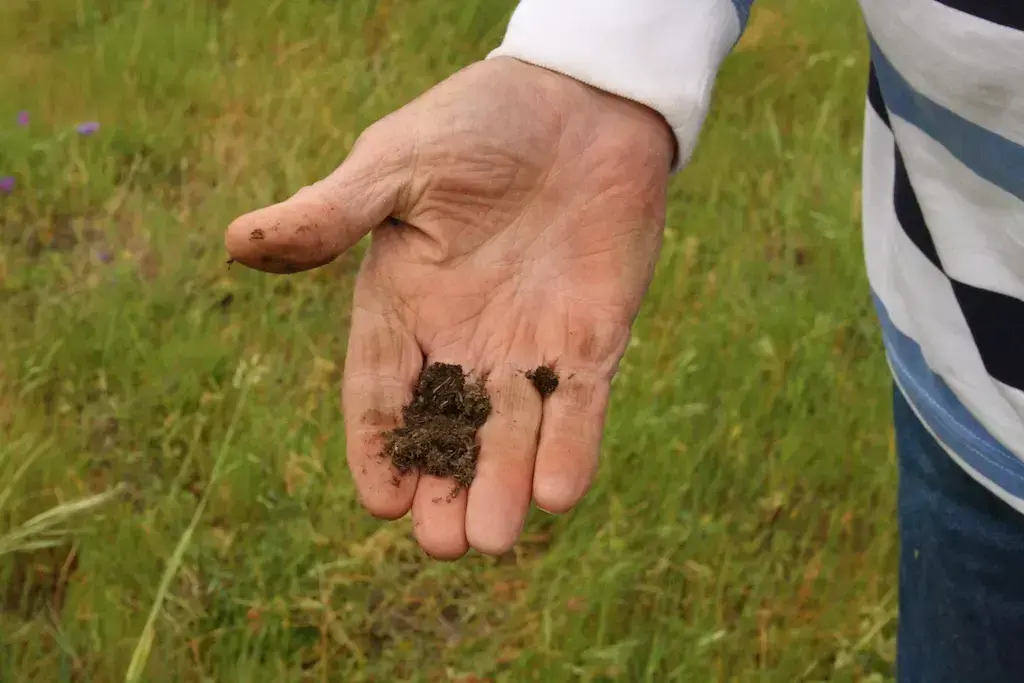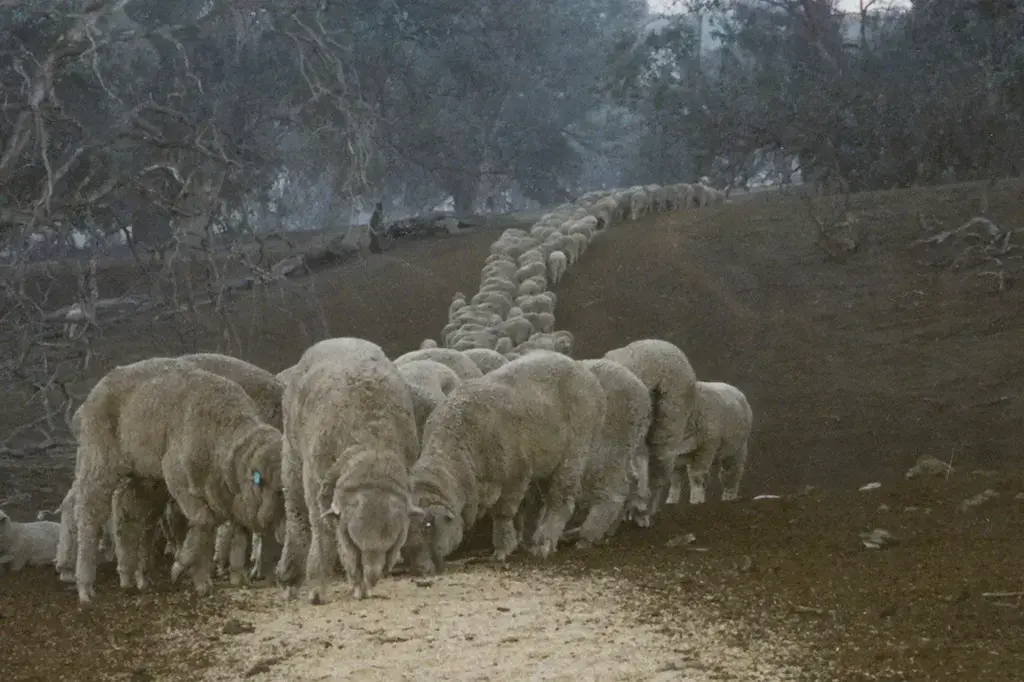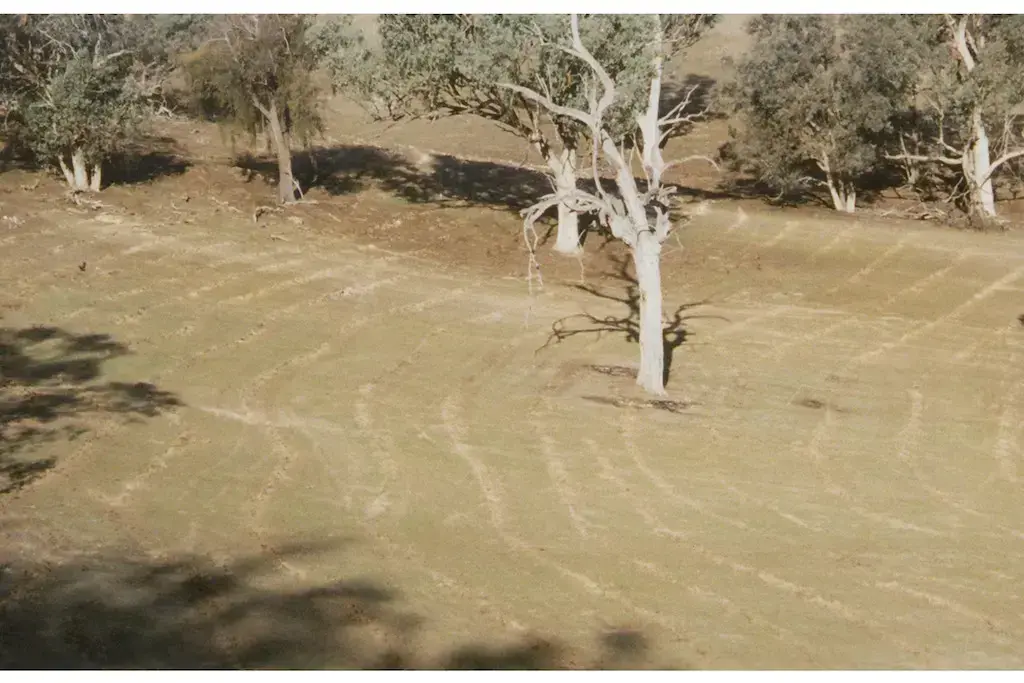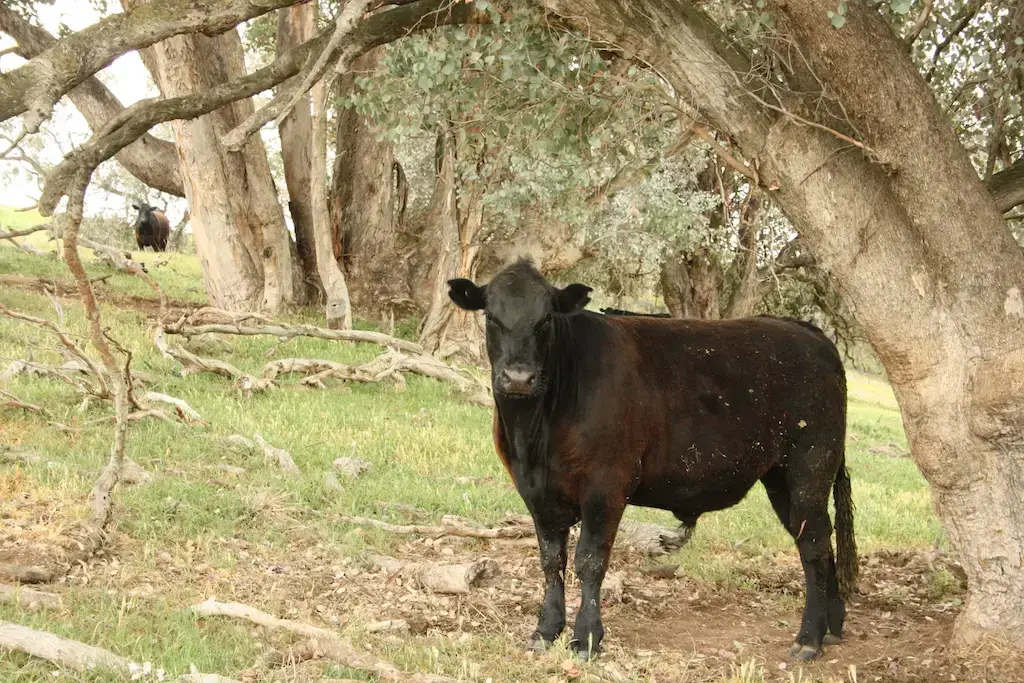‘The Illawong Story’
A REGENERATIVE AGRICULTURE CASE STUDY FROM THE NSW RIVERINA
Bryan Ward’s property, Illawong, comprises 160 hectares and carries up to 140 beef cattle at any one time. While this is a relatively small property, it is perhaps typical of thousands of farms producing beef in Australia.
Illawong, NSW
FARM FACTS
ENTERPRISE: Grass-fed cattle finishing
PROPERTY SIZE: 160 hectares
AVERAGE ANNUAL RAINFALL: 650 mm
ELEVATION: 205 m
MOTIVATION FOR CHANGE: Turning two paddocks of neglected hill country into a profitable, pasture rich operation
INNOVATIONS
Regenerative landscape and livestock management regimes, including:
- Contour ripping; direct drilling of eucalypts, acacias and understory species in fenced off remnant vegetation patches
- Rehydrating the landscape
- Removal of rabbits
- Establishment of perennial pasture
KEY RESULTS
- Illawong cattle now consistently achieve amongst the highest level of compliance, earning Bryan an award from Meat and Livestock Australia for being one of the Top 100 producers in New South Wales.
VIDEO: The Illawong story in less than a minute
Bryan’s achievements over 24 years of managing Illawong provide valuable lessons for producers seeking to maintain production while also regenerating and improving the condition of the land. Watch a 1-minute summary of Bryan’s key practices and achievements.
The Ecological Journey
Contour ripping
The sheep, rabbits and kangaroos had left little groundcover across Illawong. When the drought set in around 2000, Bryan feared that massive soil erosion would ensue when the rain returned. He was keen to contour-rip so that when rain eventually came it would penetrate, rather than run off, be wasted and exacerbate the gully erosion. That work
was assisted by a drought relief program subsidy available at the time from the Commonwealth Government through the Natural Heritage Trust. Today the contour ripping is indistinguishable, but the dams constantly have water because the rain that falls infiltrates and seeps in to the dams from the water table.
Revegetation
Adding to the soil and water conservation work, Bryan fenced off remnant trees in patches up and down the gullies to prevent further stock disturbance and to enable regrowth to stabilise gully erosion. These patches also protect livestock from wind, rain and heat. Adding to the mosaic of woody vegetation, Bryan used a direct seeding method to
revegetate the rocky ridges with a range of eucalypts, acacias and other understorey species. After about 10 years, these are becoming self-regenerating. In all, about 30% of the property is now fenced off from grazing and is revegetated with woody species. In Bryan’s words: ‘the wind used to whistle across the hill, the animals are far more
comfortable and warm now’.
A further benefit of the revegetation that Bryan has undertaken is a resurgence in native fauna; he says: ‘When I came here, you couldn’t find goannas, echidnas, etc. … plus all the little birds … they have come back!’
Rehydrating the landscape
Expert hydrologists will advise that increasing catchment cover of perennial woody vegetation as Bryan has done increases ‘evapotranspiration’, that is, plant water use, and therefore leaves less water to flow downstream.
According to the Commonwealth Government’s “National Water Policy”, this can be a problem in catchments such as the Murray River and its tributaries, where water used by trees in the upper catchments does not wind up in Lake Hume and other water storages, to be delivered to irrigators downstream in the Murray-Darling Basin. The flip side of
that argument is that, while a larger proportion of rainfall might be used by evapotranspiration, less is evaporated from the soil surface and a larger proportion can infiltrate and seep through the soil profile to the water table without causing soil erosion. From there it can recharge dams on farms and enter streams lower in the catchment, but by then it has a much reduced silt load. Soils For Life describes this process as ‘rehydrating the landscape’, and it is a recurring feature of Soils For Life case studies. Stream flow lower in the catchment might be lower in some cases, but it is probably more constant and water quality is likely to be higher.
The rabbit problem has now largely been fixed, using ripping followed by baiting with Pindone as required. Having ready access to water, kangaroos are prolific and numbers must be controlled regularly to prevent over-grazing. The only practical way to do this remains to engage professional shooters to remove a proportion of the population each
year.
Weeds, and therefore herbicide use, are considerably reduced. With 100% ground cover of vigorous pasture 100% of the time, weeds get little chance to establish.

Contour ripping on Illawong
Illawong: Production Outcomes
Initially, Bryan ran 1500 super-fine merino wethers producing 15–19 micron wool, until drought and falling wool prices forced him to change. The easing of the ‘millennium drought’ in the mid 2000s gave him the impetus to apply lime to overcome acid soils and to sow improved pastures. Perennial pasture species, predominantly phalaris and clover,
were established on approximately 80% of the grazing area. Together with spraying and grazing with sheep, this eliminated the Patterson’s Curse and other weeds, and paved the way to phase out sheep and introduce beef cattle.
The remaining unimproved pastures comprise kangaroo, wallaby and red grasses. Beef production began with agisted stock before the business turned to the current pasture-based steer finishing enterprise. There are now seven dams, up from two in 1994, and these are the only sources of water on the property.
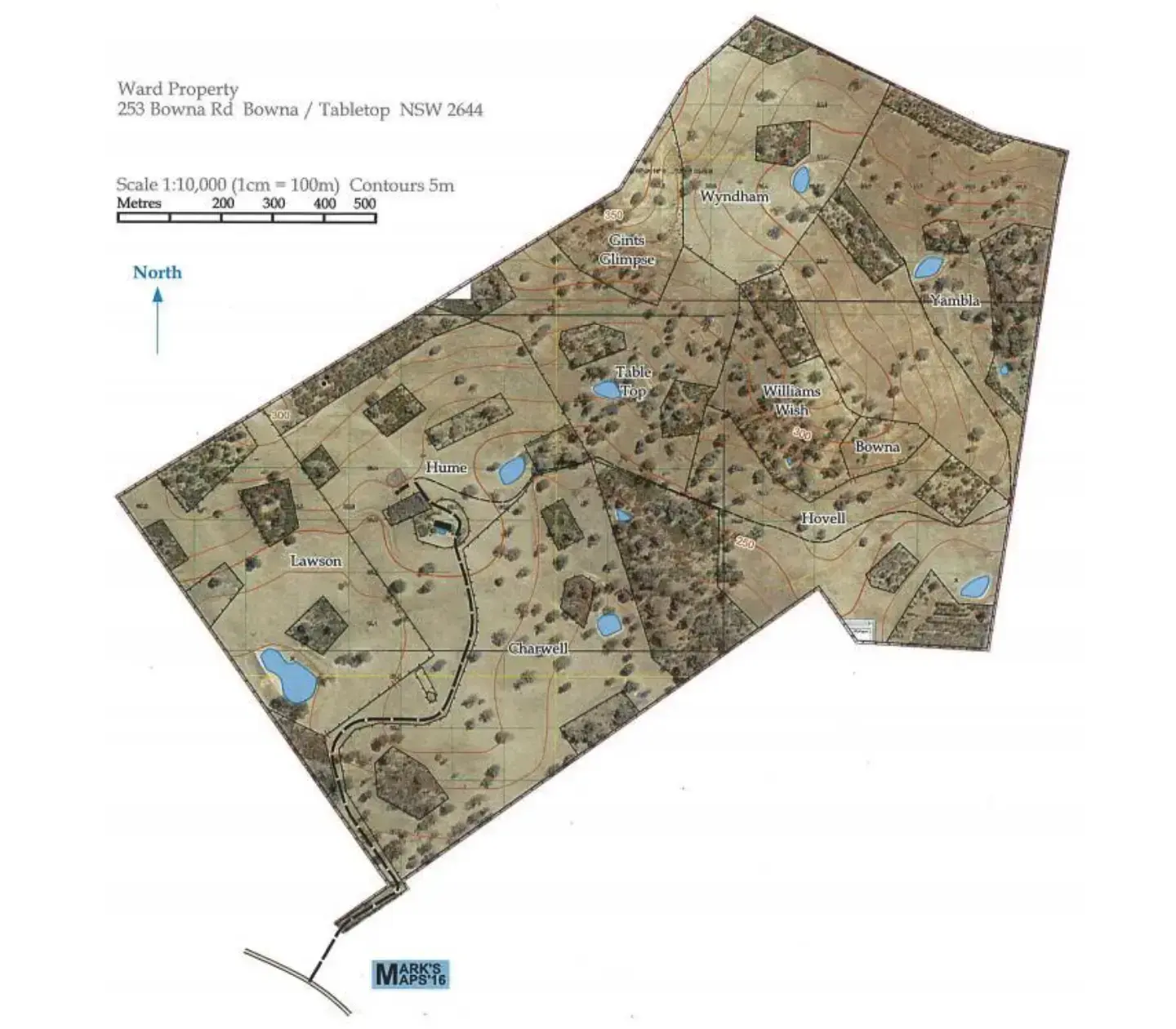
Rotational grazing
Over a ten-year period, the fencing was re-designed using electric fences so that rotational grazing could be introduced, rotating the stock around seven paddocks, leaving the pasture height at least 100 mm (1500 kg dry matter per hectare). Cattle spend 5 to 7 days in each paddock at a time, fewer in the unimproved pasture paddocks, at a stocking rate of 36 DSE/ha. This ensures that the cattle receive sufficient nutrition and provides time for pastures to recover. The native pasture species paddocks are grazed for a shorter time when animals are moved between the higher quality paddocks. This enables Bryan to better match animal feed requirements to feed availability and the nutritional needs of particular groups of animals.
Bryan plans to reticulate groundwater from bores to troughs so that the paddocks can be further sub-divided. As well as improving flexibility for rotational grazing, a major benefit of troughs would be that disturbance of the dams could be reduced so that the water would be less silty. This has benefits for animal health, and therefore their rate of weight gain. Bryan has observed that cattle go for the cleaner water and, once troughs are installed, he does not believe he would have to fence off the dams to exclude cattle.
Cattle production
Bryan buys Angus trade steers, selecting from producers whose stock he has found suitable for finishing on pasture. Three different genetic lines typically make up the annual herd. These arrive in spring at an average live weight of around 370 to 400 kg and leave by the following winter at around 630 kg live weight. The number of steers bought each year depends on seasonal conditions, so ensuring that the pasture available at the time can sustain the grazing pressure. With no dependence on maintaining breeding stock, this means there is never any pressure to overgraze in dry seasons. The timing of moving stock onto and off the property can also be adjusted to allow both for seasonal conditions and for cattle market conditions.
The finished cattle are sold into JBS Australia’s pasture-fed Food Assurance program. That requires demonstrating compliance with specifications including grass-fed only, fat colour, meat colour and fat depth, and incurring penalties or receiving lower prices for animals that do not meet specifications. Illawong cattle now consistently achieve amongst the highest level of compliance, earning Bryan an award from Meat and Livestock Australia for being one of the Top 100 producers in New South Wales and state finalist in the “Excellence in Eating Quality Awards”. This is attributable primarily to ensuring good animal nutrition, which depends on the pasture, and on managing the
temperament of the animals to minimise their stress levels.
Bryan regularly takes samples of his pastures to be analysed for feed quality in order to understand what the animals are eating and to assess whether it is sufficient for their needs. Nine-month-old steers at an average live weight of 370 kg require pasture with a metabolisable energy (ME) of at least 12 MJ per kg of dry matter and a minimum crude
protein content (CP) of at least 12% of dry matter to maintain their weight. To increase their weight at a rate of 1 kg/day or better requires ME of at least 9.9 MJ per kg dry matter and CP of 18.8% or more. Pasture foliage testing shows levels of protein and metabolisable energy from improved pastures across the year range from 8.3–11.1 MJME/kg dry matter, and a little less on native pastures. Lime and single superphosphate are applied regularly to
maintain these levels, as determined by soil tests. The lime maintains soil pH at levels that ensure nutrient availability and microbial activity are sustained and the superphosphate replaces phosphorus that is exported with the cattle.
Cattle temperament is important for the Farm Assurance quality program because muscle glycogen is depleted when the animals are stressed. This increases pH, which affects meat quality, making it dark and less tender. Frequent handling means the cattle are used to human presence and alleviates that problem. Bryan finds that frequent moving in accordance with the rotational grazing system, monthly weighing to monitor weight gain and to check for health issues and an occasional stroll through the paddock all contribute to getting them used to human presence, so that they maintain a calm temperament. This practice ensures that they are not mixed with unfamiliar cattle on trucks, which avoids stirring them up and increasing stress levels, and is a specific requirement of the Farm Assurance program.
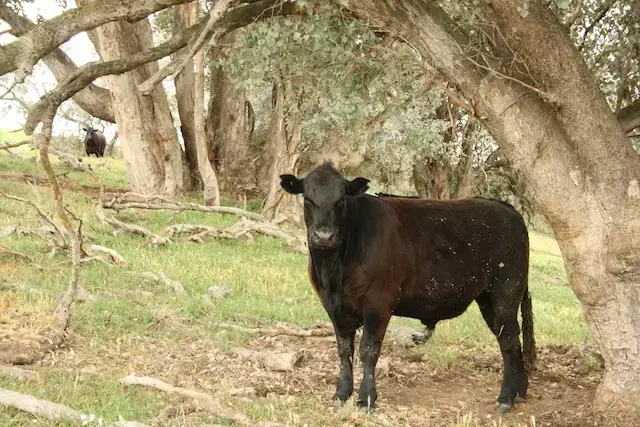
Bryan buys Angus trade steers, selecting from producers whose stock he has found suitable for finishing on pasture. Three different genetic lines typically make up the annual herd. These arrive in spring at an average live weight of around 370 to 400 kg and leave by the following winter at around 630 kg live weight. The number of steers bought each year depends on seasonal conditions, ensuring that the pasture available at the time can sustain the grazing pressure.
Bryan has variable costs of $119/ha, considerably lower than the regional average of $181. This can be attributed in part to his reliance on pastures. Feed supplements are not needed and animal health costs are minimal. Compliance with the quality assurance program ensures that prices received are at the high end of the range, which adds substantially to the total gross margin received.
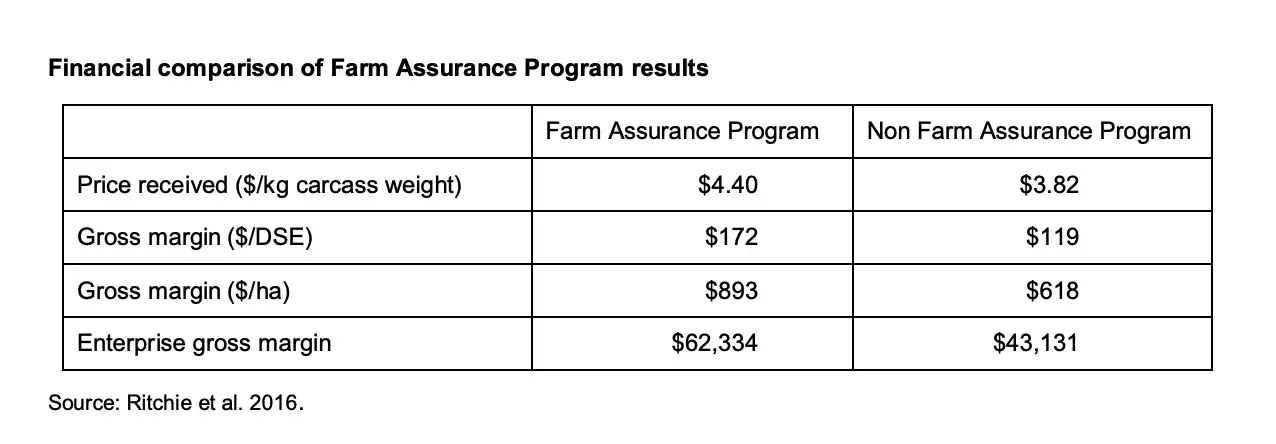
The Illawong Story
Bryan came to southern New South Wales from Victoria in 1965, having been appointed manager of Woomargama Station, a large merino sheep and cattle property about 40 kilometres north-east of Albury. After 29 years in that job, by 1994, it was time to take on a new challenge where he could try innovative ways of farming he had read about while a farm manager, but had been unable to implement. Finally he could call “a piece of dirt my own, be a one man band who could shout out orders in the morning, and alone proceed to obey them!”
To fulfil that ambition, Bryan found two paddocks of neglected hill country, a small part of a large sheep grazing property called Table Top Station located at Bowna, about 10 km north of Lake Hume and 20 km north-east of Albury. In late 1994, these run-down paddocks, comprising undulating slopes with clay loam soils rising to rocky granitic soils on steep slopes, became Illawong.
After decades of set stocking on annual pastures, Patterson’s curse, rabbits and gully erosion were prevalent on Illawong and the remaining woody vegetation comprised remnant red box, yellow box, red stringybark, Blakely’s red gum and long-leaf box trees. Average annual rainfall in the area is a respectable 650 mm, but that is little use if it falls
on bare impenetrable soil and most of it rushes down the gullies, taking topsoil with it. Carrying capacity was a low 1.5 DSE. This was the condition of the property when Bryan acquired it. Just to add to the challenge, 1996 was around the beginning of the ‘millennium drought’ which saw 10 years of severely below average rainfall across southern Australia.
Over 24 years of changing from sheep to cattle, introducing rotational grazing, establishing perennial pastures and improving stock shelter, productivity has increased from 1.5 DSE to 12–14 DSE. Cattle growth rates of over 2 kg live weight per day have been recorded in winter. Most importantly, the business can adjust to seasonal conditions so that pastures do not suffer from over-grazing in dry periods and there is no loss of soil capital.
The practices adopted by Bryan at Illawong are not ground breaking [no pun intended] or revolutionary. It is simply common sense land management based on self-evident principles. Nor is it complicated or particularly expensive to implement … but it is surprising how uncommon, common sense can be and how avoidable obstacles prevent people from changing habits ingrained after decades and generations.



